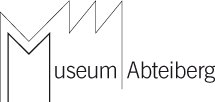The oeuvre of Rumanian artist Mircea Cantor (b. 1977 in Oradea) deals with our time and creates unexpectedly new images to interpret it. It deals with society, politics and the globalised present with all its multiple, refracted and contradictory realities. And addresses the human utopias, promises of faith and happiness that now seem implausible or even completely outdated. They return in Cantor’s work as provocative, atavistic forces that inextricably bind together the present, past and future as well as different places in the modern world.
There is a conspicuous presence of “poor” and “primitive” methods as well as simple human gestures in Cantor’s work. The artist uses media that have an anthropological and empathic impact: Simple materials, hand-made forms, craft techniques, texts and drawings made with candle soot or lipstick – even fingerprints on a wall. His works recall the arte povera and process art of the 1960s and 1970s, but develop a different, more contemporary message informed by ‘real life’ conditions under which Cantor began his observations: On the one hand, everything that appears here must be read within the mentioned contemporaneity of past and present. On the other hand, precisely this phenomenon points beyond any biographical and cultural context. It refers not to a specific local situation, but to a general human condition, and therefore becomes a parable.
Based between Rumania and Paris and constantly moving between these and other spheres of our contemporary reality Mircea Cantor insists on a critical consciousness and a rather ephemeral state of contemporary artistic work: not focused on any medium, dedicated not to its own preciousness but to an inner economy of condensed and “necessary” (M. Cantor) statements. This explains why he presents his work in continuous series of new arrangements, rejecting the art market’s demand for “new productions” and acting along “a necessity to do something and also the necessity of not responding”.
Being confronted with a work like Cantor’s there is a tension, factually deep and only seemingly overcome when he recalls it: “What interests me is not to get answers but rather to identify the question which is to be raised in this specific moment.” (M. Cantor)
Mircea Cantor’s title WISE AS SERPENTS AND INNOCENT AS DOVES (Matt. 10:16) sums up the deeply ambivalent parable behind his subjects and brings together about thirty works that are on show at Museum Abteiberg in what is Cantor’s largest solo exhibition to date. It features sculptures and installations (including “Monument for the End of the World,” “Seven Future Gifts,” “Angels and Airplanes,” and “Dimension Variable”) as well as photographs, collage-like works on paper and wall paintings, many of which have never before been shown in Germany and some of which were redesigned specifically for this exhibition.
In addition, the exhibition presents the artist’s numerous films with their surprisingly contradictory visual languages. They range from documentary scenes (“Double Heads Matches,” “Dead Time,” “The Leash of the Dog That Was Longer Than His Life,” “Vertical Attempt”), an animation (“Zooooooom,” 2006 – 2009) and a new choreographic film titled “Tracking Happiness” (2009) to the films that first drew public attention to Cantor’s works about five years ago: “The Landscape is Changing,” a focus on a large urban demonstration with mirror banners (2003) and “Deeparture,” which shows a wolf and a fawn lurking and roaming in a white space: potential perpetrator and victim in an endless loop, fully silent (2005).
One of the works will be presented in open-air urban space – on the lawn outside Museum Abteiberg. It is “Color, Silent” (2009): a blue-and-silver Mercedes bearing the markings of the German police with a recurring spectacle of light and sound emanating from its interior. The siren has been installed on the inside of the car’s roof, inverting the symbol of state authority: The siren is trapped in the car like a gag, its sound muted, its light strangely helpless, any vestige of functionality called into question.
The exhibition project with Mircea Cantor is supplemented by a book designed by the artist himself, which presents a retrospective of his oeuvre. It was compiled jointly by Kunsthaus Zurich and Museum Abteiberg and published by Kehrer Verlag in 2009. 16.5 × 27cm, 224 pages, 136 coloured and black-and-white illustrations, ISBN 978-3-86828-107-1, retail price 27 euros.
PROGRAM
4 July 2010, 2 pm
ARTIST TALK with Mircea Cantor
The exhibition was organised in cooperation with Kunsthaus Zurich and Kunsthalle Nürnberg with generous financial assistance from the Dr. Georg und Josi Guggenheim Foundation, the Hans Fries Foundation and Sammlung Rheingold, whose purchase of the film “Deeparture” in 2005 laid the foundation for subsequent cooperation with the artist.

